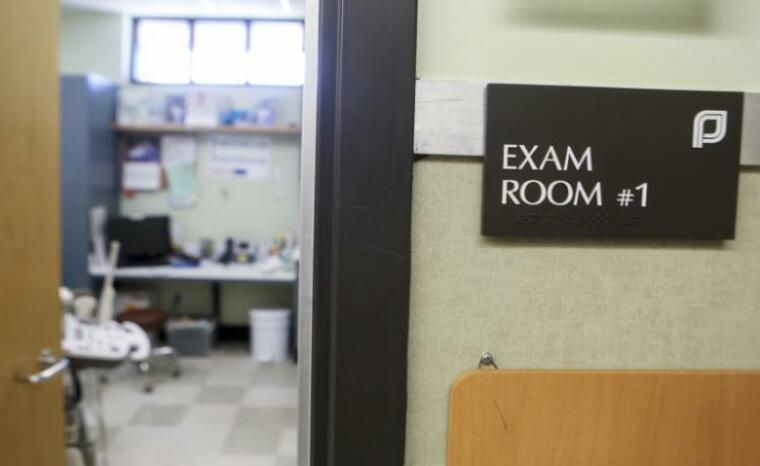In 2014, 1 in 3 pregnant women in New York City obtained an abortion, latest CDC figures reveal

The latest figures from the Center for Disease Control and Prevention have revealed that a third of pregnant women in New York City obtained an abortion in 2014.
The report released by the CDC the day after Thanksgiving had indicated that New York City had the highest abortion rate in the U.S. in 2014, with 34.8 abortions for every 1,000 women between the ages of 15 and 44.
The city also had the highest abortion ratio, with 575 abortions for every 1,000 live births. A total of 67,620 abortions were performed in the city, compared to approximately 117,600 births. New York City was followed by Florida, which had 328 abortions for every 1,000 births, Life News reported.
While the abortion rate remains high in New York City, the total number of abortions across the U.S. has fallen to a historic low.
CDC figures have shown that the number of reported abortions has dropped to 652,639 in 2014, compared to 664,435 in 2013.
The largest decline was seen among pregnant teenagers, with a 46 percent decrease in the abortion rate since 2008. The report noted that about 59 percent of all abortions in the U.S. were performed on women in their 20s.
Despite the overall decline, the report found that the abortion rate for African-Americans increased from 35.6 percent in 2013 to 36 percent in 2014.
Planned Parenthood's annual reports have also shown a drop in abortions in the same period. According to the abortion provider, the number of abortions has decreased from 327,653 abortions in 2013–2014 to 323,999 abortions in 2014–2015. However, the organization reported an increase the abortion rate in 2015–2016, when it performed 328,348 abortions.
Some have attributed the decline in the abortion rate to the more effective use of contraception, the closure of many abortion clinics, as well as the falling pregnancy rate.
An analysis by the Guttmacher Institute has revealed that access to abortion services remained largely the same between 2000 and 2014 for the majority of American women. During the same period, the use of contraceptive methods like hormonal birth control and condoms increased, especially among teenagers.
Laura Lindberg, a principal research scientist with the institute, noted that there had been no significant change in adolescent sexual activity during that period.
"Our new data suggest that recent declines in teens' risk of pregnancy—and in their pregnancy rates—are driven by increased contraceptive use," she said.
In an article published by the National Review, Ave Maria University professor Michael J. New criticized the media's explanation for the decline.
"Unsurprisingly, most of the media coverage gives much of the credit for the abortion-rate decrease to increased contraception use," the professor wrote.
"There is some evidence that there has been a short-term decline in the incidence of unintended pregnancies, but another key factor behind the 50 percent abortion-rate decline since 1980 is the fact that a smaller percentage of unintended pregnancies result in an abortion," he added.
 Christians don't have to affirm transgenderism, but they can’t express that view at work: tribunal
Christians don't have to affirm transgenderism, but they can’t express that view at work: tribunal Archaeology discovery: Medieval Christian prayer beads found on Holy Island
Archaeology discovery: Medieval Christian prayer beads found on Holy Island Presbyterian Church in America votes to leave National Association of Evangelicals
Presbyterian Church in America votes to leave National Association of Evangelicals Over 50 killed in 'vile and satanic' attack at Nigerian church on Pentecost Sunday
Over 50 killed in 'vile and satanic' attack at Nigerian church on Pentecost Sunday Ukrainian Orthodox Church severs ties with Moscow over Patriarch Kirill's support for Putin's war
Ukrainian Orthodox Church severs ties with Moscow over Patriarch Kirill's support for Putin's war Islamic State kills 20 Nigerian Christians as revenge for US airstrike
Islamic State kills 20 Nigerian Christians as revenge for US airstrike Man who served 33 years in prison for murder leads inmates to Christ
Man who served 33 years in prison for murder leads inmates to Christ


 Nigerian student beaten to death, body burned over ‘blasphemous’ WhatsApp message
Nigerian student beaten to death, body burned over ‘blasphemous’ WhatsApp message 'A new low': World reacts after Hong Kong arrests 90-year-old Cardinal Joseph Zen
'A new low': World reacts after Hong Kong arrests 90-year-old Cardinal Joseph Zen Iran sentences Christian man to 10 years in prison for hosting house church worship gathering
Iran sentences Christian man to 10 years in prison for hosting house church worship gathering French Guyana: Pastor shot dead, church set on fire after meeting delegation of Evangelicals
French Guyana: Pastor shot dead, church set on fire after meeting delegation of Evangelicals ‘Talking Jesus’ report finds only 6% of UK adults identify as practicing Christians
‘Talking Jesus’ report finds only 6% of UK adults identify as practicing Christians Mission Eurasia ministry center blown up in Ukraine, hundreds of Bibles destroyed: 'God will provide'
Mission Eurasia ministry center blown up in Ukraine, hundreds of Bibles destroyed: 'God will provide' Church holds service for first time after ISIS desecrated it 8 years ago
Church holds service for first time after ISIS desecrated it 8 years ago Burger King apologizes for 'offensive campaign' using Jesus' words at the Last Supper
Burger King apologizes for 'offensive campaign' using Jesus' words at the Last Supper Uganda: Muslims abduct teacher, burn him inside mosque for praying in Christ’s name
Uganda: Muslims abduct teacher, burn him inside mosque for praying in Christ’s name